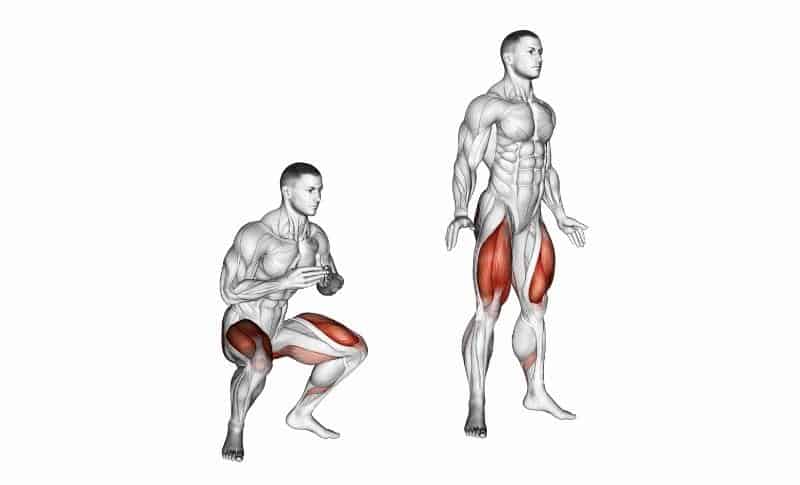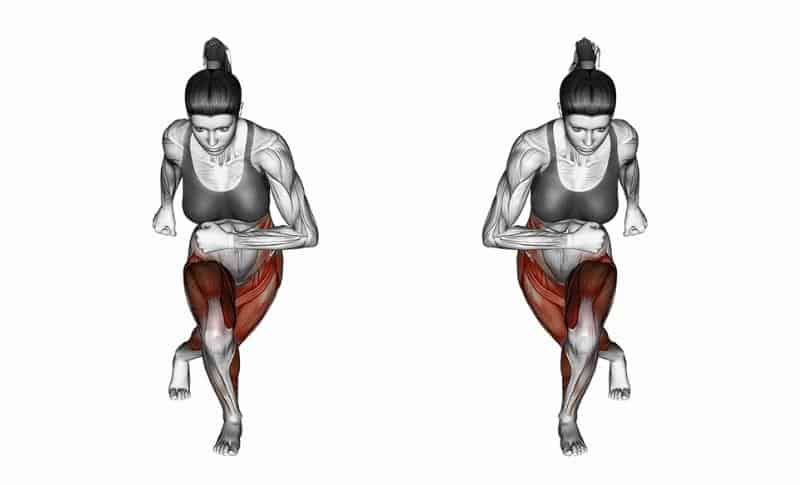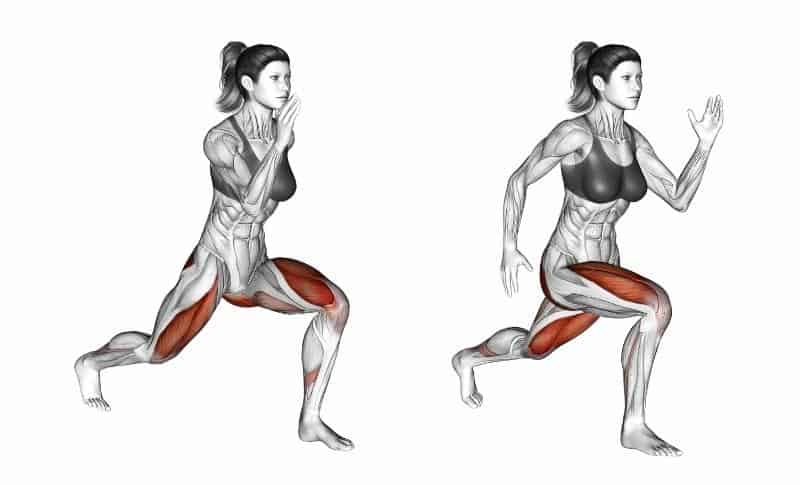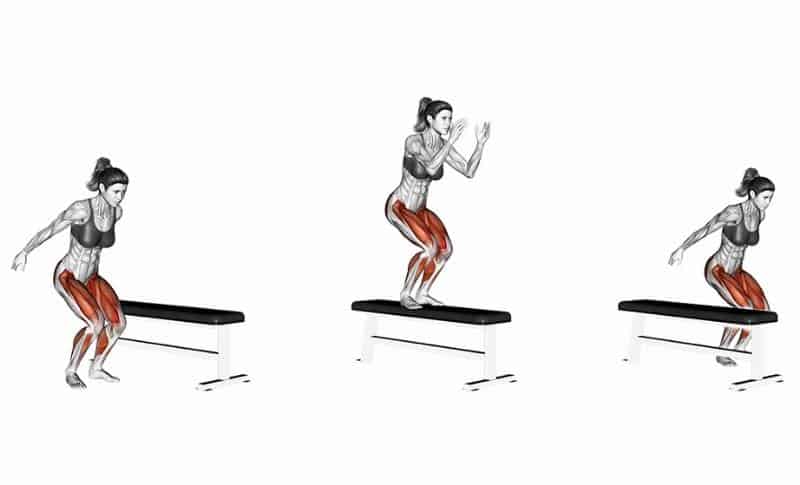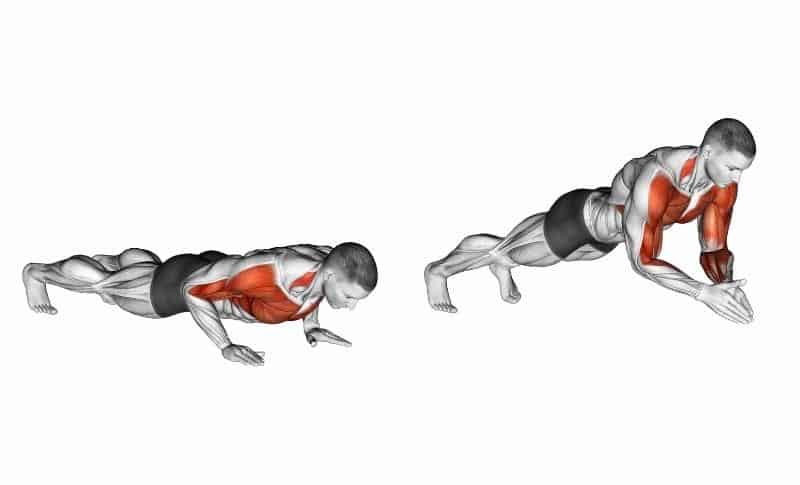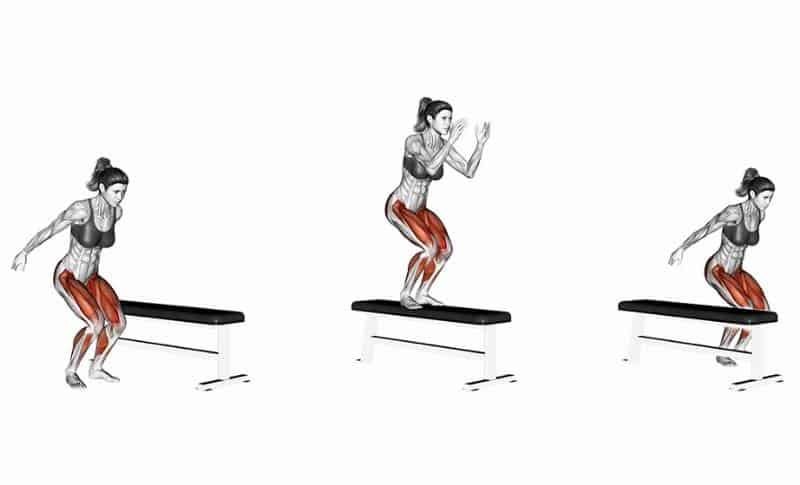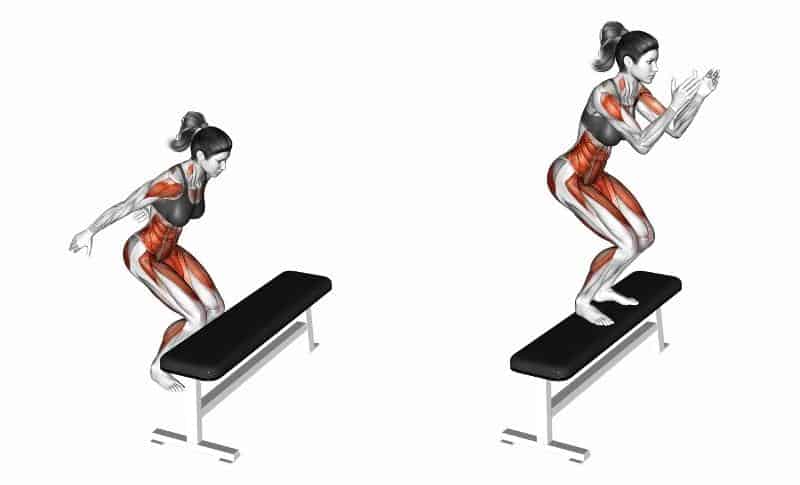Training
The 10 Best Plyometric Exercises
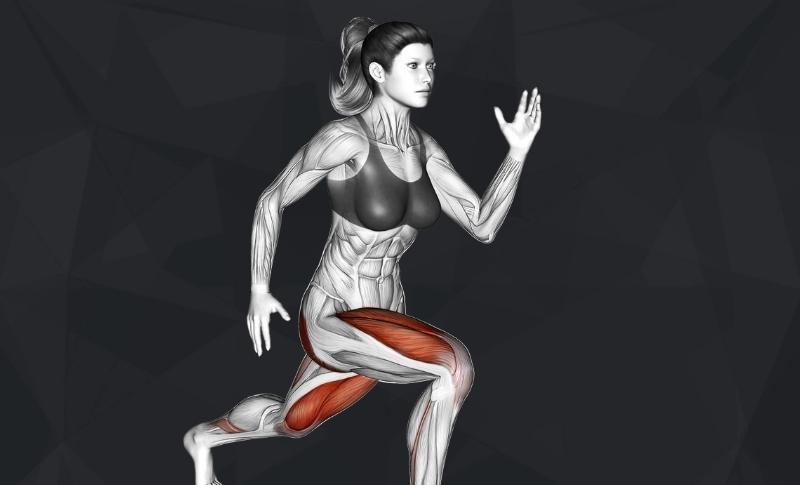
What are the best plyometric exercises?
Plyometric exercises, also known as plyos or jump training, involve short intervals of maximum muscle force to increase power.
Plyometric training is popular for boosting speed, strength, and endurance, and if you really want to challenge yourself, then a plyometric workout is the way to go.
We are big fans of plyometric exercises, and we wanted to make it easy for you to take your training to the next level with this list of the best plyometric movements.
Make sure to put these exercises at the top of your list for your next plyometric training session.
The Best Plyometric Exercises
Our exercise lists are created by determining the best exercises for muscle growth, core strength, and overall health and well-being.
Here’s our list of the 10 best plyometric exercises:
10. Squat Jumps
Great for:
Toning your abs, butt, and legs while burning calories and building muscles.
How to do it:
- Stand up straight with your feet just wider than your hips.
- Lower down into a squat, bringing your butt close to the floor.
- Press up through your feet with abs engaged.
- Jump up and lift arms overhead.
- After landing, lower back down into a squat.
- Do 2 or 3 sets of 10 repetitions for the best results.
Why:
Squat jumps improve agility, power, balance, and vertical jump, not just for athletes but for anyone who wants to boost muscle strength and improve aerobic fitness.
If you want a toned butt and legs, definitely add squat jumps to your plyometric workout.
When:
It’s best to incorporate squat jumps into plyometric training 3-5 times a week.
Squat jumps are a great way to get your heart rate up at the beginning of a workout, but you can do them at the end too.
9. Medicine Ball Chest Press
Great for:
Activating chest and upper back muscles to strengthen chest, core, and shoulders.
How to do it:
- Hold medicine ball to your chest while standing with feet hip-distance apart.
- Press the ball out to the front of your chest until your arms are fully extended.
- Pull the ball back in, keeping shoulders down.
- Do one set of 12-15 repetitions.
Why:
Medicine ball chest press is an effective plyometric exercise that uses the weighted medicine ball to build core, chest, and shoulder muscles.
While the pressing motion activates upper back and chest muscles, your shoulders do a lot of the work as you press the bar away from your body.
When:
Many people prefer the medicine ball chest press in the middle of their plyometric workout routine, but it can be a good warm-up, too.
Just remember to be mindful of how heavy the medicine ball is, especially because the ball and socket shoulder joint is vulnerable to injury.
Start with a lighter medicine ball and work your way up from there.
8. Skaters
Great for:
Boosting heart rate and toning glutes and legs while warming up.
How to do it:
- Start in a slight squat and jump sideways to your left side.
- Land on your left leg, bringing the right leg behind the left ankle.
- Keep your back leg off the floor and maintain your form, similar to a curtesy lunge.
- Reverse direction to jump sideways to the right on your right leg.
- Complete one rep with one jump on each side (left and right).
- Aim to do two sets with 20 reps each.
Why:
Skaters are a fantastic way to build lateral power and strength, especially in quads and glutes. By placing the whole load on one leg simultaneously, skaters improve balance and stop you from favoring the stronger leg.
Competitive runners often use skaters as a warm-up to get their heart rate going, but people of all fitness levels can benefit from this exercise that tones the glutes and core.
When:
Skaters are usually used as a warm-up, so add them in at the start of your plyometric workout for the best results.
If you want an extra intense sweat session, commit to three-minute-long skater sets, switching between rest and recovery to maximize muscle work.
7. Burpees
Great for:
Building endurance and strength in the legs, chest, and arms.
How to do it:
- Start standing and bend your legs into a squat.
- Put your hands down on the floor and jump your feet back.
- Keep your spine straight while in the plank position.
- Bring your chest down to the floor to complete one push-up.
- Jump your feet forward, bringing them just outside of your hands.
- From a squat position, jump up explosively with arms overhead.
- Do 8 to 12 reps in 2 or 3 sets.
Why:
Burpees have a reputation as a challenging exercise, but that’s because they are an excellent cardio and plyometric exercise.
Burpees burn belly fat and serve as a calisthenics exercise that works the entire body, building muscles in the arms, chest, shoulders, abs, gluteus, hips, and legs.
When:
Burpees can be part of your daily fitness routine and typically fit in perfectly in the middle of a plyometric workout to keep the blood pumping and the heart rate up.
Many people also like to push themselves to the limit at the end of a workout by ending with an intense round of burpees.
6. Explosive Split Squats
Great for:
Training quads, glutes, and hamstrings while maximizing core balance.
How to do it:
- Start standing and step forwards like you’re taking a lunge.
- Keep the heel of your back foot raised and your torso straight.
- Slowly lower your leg until the back knee nearly touches the floor.
- Push back up explosively and repeat, doing all reps on one leg before switching to the other.
- Start with two sets of 6-8 reps, and aim for three sets of 12 reps on each leg as you build strength.
Why:
Explosive split squats are among the best plyometric exercises to improve balance, stability, and lower body strength.
Not only do your quads and glutes work hard to perform each split squat, but maintaining proper form keeps your core engaged and balanced to give your abs a boost.
When:
These split squats are not for the faint of heart and are best done in the middle or near the end of your plyometric workout.
You should do them two or three times a week to start, which ensures your muscles are getting a great workout while keeping in mind potential fatigue.
5. Dot Drills
Great for:
Improving foot speed, quickness, and ankle/calf strength.
How to do it:
- Stand behind a dot mat or mark out five spots like on dice.
- Place your feet on the two front corner dots.
- Hop a bit off the ground and bring feet together on the middle dot.
- Jump slightly and bring feet apart, so each foot lands on a far corner dot.
- Reverse and repeat the movement for 10 reps.
- Do the second sequence, which is the same as the first, except you turn around once at the far end and go forward instead of reversing.
- Repeat 10 times.
- For the third sequence, hop on one leg to each dot, starting from the front right corner.
- Hop from the corner to the middle dot, then the far right, then the far left, all on one leg.
- Hop back to the middle dot, the front left, and back to the front right to complete one rep.
- Repeat 10 times and switch to the other foot.
- Finish with 10 hopping reps using both feet close together.
Why:
Dot drills are a fun and fast way to build up foot speed and quickness, which benefits athletes and anyone looking to increase fitness endurance.
Dot drills are a challenging way to keep your mind and body engaged throughout the entire workout while also promoting strong ankles and calves like other jumping exercises.
When:
For the best results with dot drills, do them 3-4 times a week, preferably as a warm-up at the beginning of your session.
As the week goes on, look to increase your dot drill speed. 50-60 seconds for each rep is ideal, while 60-70 seconds is average, and 70-80 seconds is something to improve on.
4. Weighted Lateral Jumps
Note: This illustration only shows bodyweight, but you can hold a plate or kettlebell for a weighted jump.
Great for:
Boosting lateral leaping ability and strengthening calf muscles.
How to do it:
- Put a weighted plate on each side of the barbell and place it on the ground.
- Start standing off to the side about 6 inches from the barbell.
- Hold a weighted medicine ball or plate over your head.
- Keep your feet close together with a slight bend in the knees.
- Hop back and forth over the bar, keeping your feet light.
- Do 2-3 sets in each direction with 10-15 reps each.
Why:
Weighted lateral jumps are some of the best plyometric exercises for improving lateral leaping ability and athleticism.
With a focus on agility and being fast and light on your feet, weighted lateral jumps target ankle and calf muscles while also increasing coordination and balance.
When:
Most people like to do weighted lateral jumps near the start of their workout, as each jump gets the lower body muscles moving while increasing the heart rate.
As a weighted exercise, it’s best to do these lateral jumps 2-4 times a week, which keeps the muscles developing while also protecting against overexertion and exhaustion.
3. Clapping Push-Ups
Great for:
Enhancing core stability and building shoulder strength.
How to do it:
- Get into plank position.
- Bring your body down to the floor for a regular push-up.
- Push hard enough to press up and lift your hands and body high off the ground.
- Clap your hands before returning to the starting position.
- Repeat for 30 seconds.
- Aim for three sets of 5-8 reps.
Why:
Clapping push-ups are some of the best plyometric exercises for your upper body, as they build core stability with a strong athletic stance.
Also, challenging yourself to clap between each push-up increases lower body power and helps with shoulder strength and quick reflexes.
When:
Clapping push-ups can be exhausting and are a great finisher for a plyometric training session. You may also want to switch off between these push-ups and burpees to really work the chest and shoulders.
It’s good to do these push-ups every two or three days, which offers a good mix of shoulder and chest work while lowering the risk of injury.
2. Lateral Box Jumps
Great for:
Targeting the quads, glutes, hip flexors, and hamstrings.
How to do it:
- Stand to one side of a weight bench or exercise box.
- Keep your body parallel with the box and jump two feet sideways, up and over the box.
- Jump two feet across the box to land on the starting side and complete one rep.
- Do 3 or 4 sets of 5 reps each.
Why:
Lateral box jumps activate the calves, quads, hamstrings, and glutes to give you better leg strength and more lower-body muscle definition.
Lateral jumps are a great way to improve balance and coordination, with no equipment other than the weight bench or exercise box.
When:
It’s best to do lateral box jumps 1-3 times a week towards the end of a plyometric workout.
You need enough energy to safely clear the box and ensure proper jumping technique.
Also, make sure you rest for a few minutes in between lateral box jump rounds to ensure the strongest jumping performance.
1. Front Box Jumps
Great for:
Increasing vertical jump and strengthening quads and glutes.
How to do it:
- Stand 6 inches behind a ply box.
- Squat down with feet shoulder-width apart.
- Use your legs and arms to explode up.
- Land gently on the box with the balls of your feet.
- Step down to reset and repeat.
- Do three sets of 10 reps each.
Why:
As one of the best plyometric exercises, front box jumps are a popular way to improve vertical jump ability, targeting the quads and glutes that are essential for proper jumping.
Front box jumps help you become faster and more powerful, and a few sets will burn calories and get your heart rate up during a plyometric training session.
When:
Front box jumps are perfect toward the middle or end of plyometric training.
Many people do box jumps after a set of squats for maximum power.
If you want to increase difficulty, consider raising the box height or adding weight with dumbbells, a barbell, or a weighted vest.
FAQs About Plyometric Exercises
If you want to get more prepared for a plyometric workout, check out our answers to the most frequently asked questions about plyometric exercises.
Q: What Are Plyometric Exercises Good For?
Plyometric exercises improve strength, explosiveness, agility, speed, and power, which benefits people of all fitness levels.
Many of the best plyometric exercises are bodyweight exercises, although there’s a good mix of weighted exercises, too, offering a challenging combination that targets muscles all over the body.
If you want an intense muscle-building workout that burns calories and fat, plyometric exercises are worthwhile, as you can maximize muscle output in a short amount of time.
Q: How Many Plyometric Exercises Should I Do?
A high-intensity plyometric workout lasting 20-30 minutes is enough to make a difference in your muscle development and growth.
10-20 plyometric exercises are a good place to start, considering that you should feel a muscle burn with this type of fitness routine.
Plyometric exercises are exhausting and challenging, so you should be sweaty and tired after burning hundreds of calories at the end of the session.
Q: How Often Should You Do Plyometric Exercises?
The ideal amount of plyometric training sessions is three per week, which offers the ideal balance between challenging your body and protecting against injury.
Plyometric exercises enhance functional joint stability and help recover and regain muscle after injury, so it’s important to prioritize these exercises a few times a week.
If you’re starting with plyometric exercise, you may want to start with one or two weekly sessions before scaling up.
Q: Do Plyometric Exercises Build Muscle?
Plyometric exercises are designed to build muscle through intense, challenging workouts that activate muscles all over the body.
Jump movements activate 100% of muscle fibers in the target muscles, which helps develop and define muscles throughout the entire body.
Plyometric exercise can help with both muscle building and regaining strength as part of sports injury rehabilitation too.
Q: Why Does Plyometric Training Improve Power?
Plyometric training improves power by supporting maximum muscle strength in a short amount of time.
You’re training your body to put as much effort as possible into a short exercise, which builds endurance and power in the long run.
The more plyometric exercises you can incorporate into your workout, the stronger your muscles become, helping to improve overall fitness and athletic performance.
Summary
Plyometric exercises are an excellent addition to your workout routine, especially if you want to increase strength and endurance with a highly effective sweat session.
These short intervals of maximum muscle force offer powerful aerobic exercises that bring you closer to your gym goals and offer cardiovascular health benefits.
Plyometrics burn calories and tone your entire body, so it’s worthwhile to start incorporating plyometric exercises into your workout routine.
Here’s a quick recap of the 10 best plyometric exercises:
- Front Box Jumps
- Lateral Box Jumps
- Clapping Push-Ups
- Weighted Lateral Jumps
- Dot Drills
- Explosive Split Squats
- Burpees
- Skaters
- Medicine Ball Chest Press
- Squat Jumps
If you enjoyed this article, check out some of our other exercise lists:

